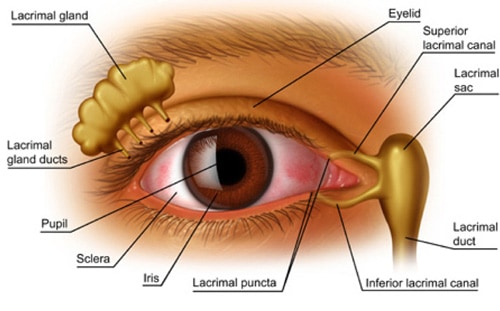Dry Eye Syndrome
The imbalance of the quantity and quality of tears in the eye is termed dry eye syndrome. Tears are relatively complex in nature and are made up of a thin film used to keep the eye moist to allow clear, comfortable vision. The tears must not evaporate too fast and must spread over the surface of the eye. Not enough, or reduced quality tears can create dry spots on the front surface of the eye that can cause discomfort or reduced vision. Dry eye syndrome is one of the most common problems treated by eye specialists.

Frequently this condition is caused simply by the ageing process as the body produces less oil that is a key component in the tear film. With less oil to seal the watery layer, the tear film evaporates much faster, leaving dry areas on the cornea. Many other factors, such as hot, dry or windy climates, high altitudes, air-conditioning, cigarette smoke, wearing contact lenses, some eye surgery, and taking some medications can also cause dry eyes. Some of the symptoms include; itching, burning, irritation, redness, blurred vision that improves with blinking, excessive tearing and increased discomfort after periods of reading, watching television or working on the computer.
Treatment of Dry Eye Syndrome
There is a range of treatment options that depend upon the nature of the dry eye condition. The best option for you will be determined after consultation with one of our specialists. Many patients find relief from using artificial tears on a regular basis. Preservative-free tears are recommended as they are the most soothing and have fewer additives that could potentially irritate. Another option may be with special inserts called punctual plugs that are used to close the tear duct. These plugs trap the tears on the eye, keeping it moist. This may be done on a temporary basis with a dissolvable collagen plug, or permanently with a silicone plug. Treatment may also include some lifestyle changes.

